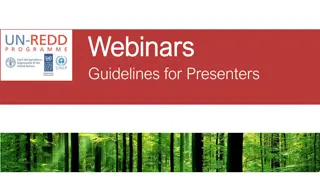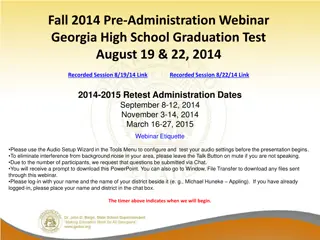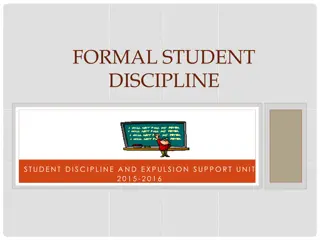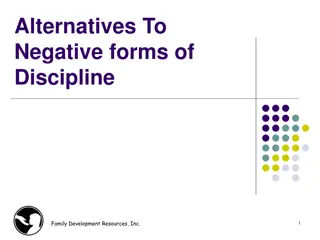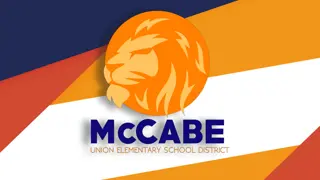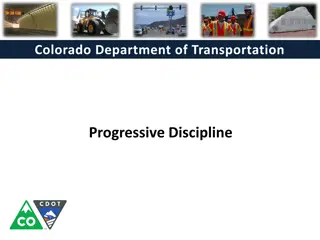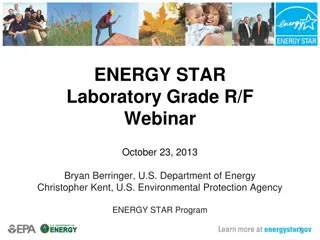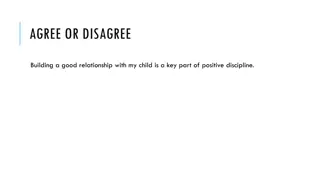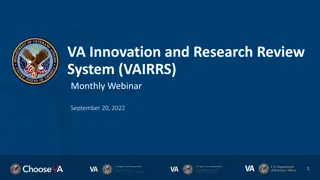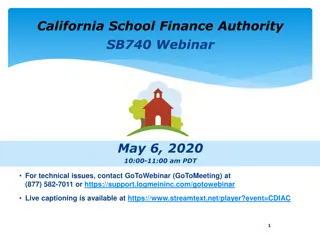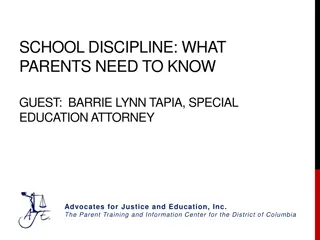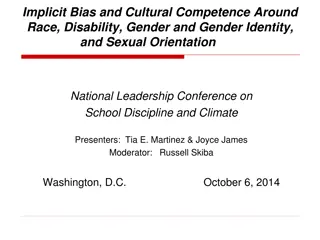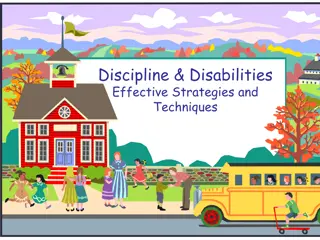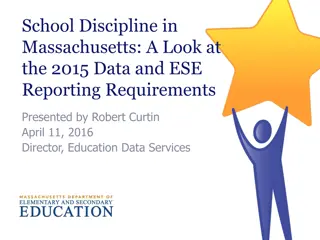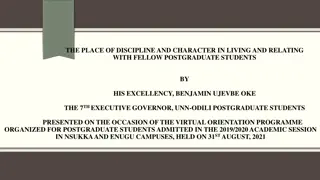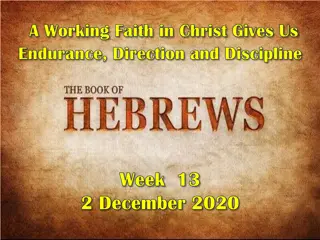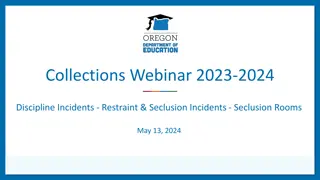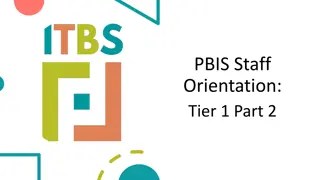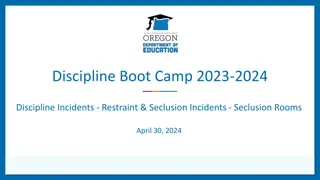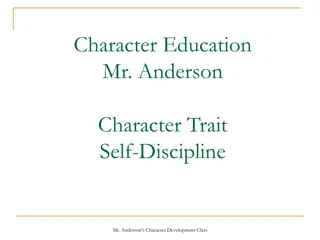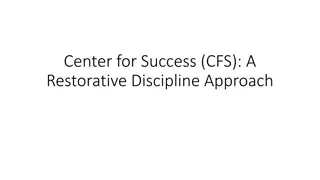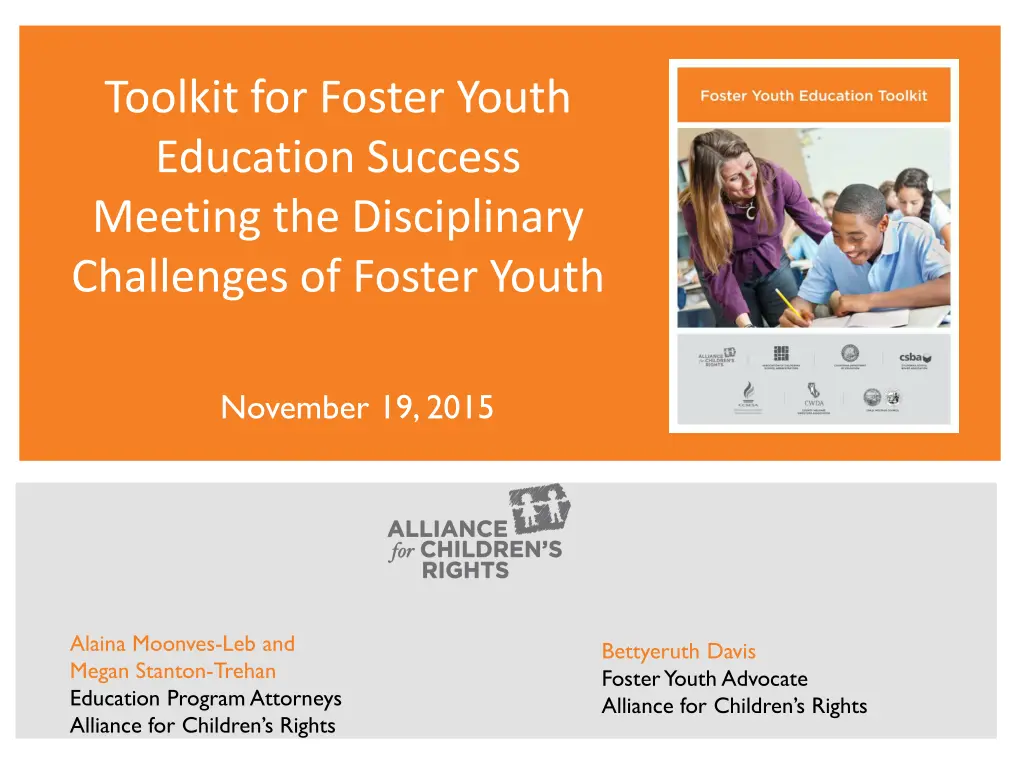
Challenges Faced by Foster Youth in Education and Justice System
Explore the intersection of foster youth, education, and the juvenile justice system through the lens of the school-to-prison pipeline. Learn about the disproportionate impact on foster youth, the risks they face from exposure to abuse and neglect, and how they are over-represented in the juvenile justice system. Discover strategies for supporting and advocating for foster youth to prevent their involvement in the pipeline.
Download Presentation

Please find below an Image/Link to download the presentation.
The content on the website is provided AS IS for your information and personal use only. It may not be sold, licensed, or shared on other websites without obtaining consent from the author. If you encounter any issues during the download, it is possible that the publisher has removed the file from their server.
You are allowed to download the files provided on this website for personal or commercial use, subject to the condition that they are used lawfully. All files are the property of their respective owners.
The content on the website is provided AS IS for your information and personal use only. It may not be sold, licensed, or shared on other websites without obtaining consent from the author.
E N D
Presentation Transcript
Toolkit for Foster Youth Education Success Meeting the Disciplinary Challenges of Foster Youth November 19, 2015 Alaina Moonves-Leb and Megan Stanton-Trehan Education Program Attorneys Alliance for Children s Rights Bettyeruth Davis Foster Youth Advocate Alliance for Children s Rights
Technical Details Call-in number is +1 (951) 384-3421 and access code is 665-661-598 To submit questions, click on your Questions panel, type your question and click send Presentation materials and the Foster Youth Education Toolkit can be found at: kids-alliance.org/edtoolkit
Youth Perspective Bettyeruth Davis, Peer Advocate
Agenda 1. Indicators of Need 2. Prevention and Intervention a. Specific Procedures, Tools and Tips 3. Formal Discipline a. Legal Requirements b.Special Requirements for Foster Youth 4. School to Prison Pipeline
The School to Prison Pipeline The school to prison pipeline is the increasing trend of policies and practices that push youth, often those with the highest levels of need, out of schools and into the juvenile justice system.
The School to Prison Pipeline Foster Youth are Disproportionately Impacted: Exposure to child abuse and neglect increases the risk of arrest by 55%, and the risk of arrest for a violent crime by 96% Juvenile Justice and Delinquency Prevention Coalition, Back on Track: Supporting Youth Reentry from Out-of-Home Placement to the Community at 14 (Fall 2009). 25% of former foster youth are incarcerated within a few years of turning 18, and 70% of California inmates are former foster youth. Brian Goldstein, Crossover Youth : The Intersection of Child Welfare & Juvenile Justice, http://jjie.org/crossover-youth-intersection-of-child-welfare-juvenile-justice.
The School to Prison Pipeline Other At Risk Populations are Also Over- Represented: Of youth who are in juvenile detention facilities, such as juvenile halls and camps: 70% have a mental health diagnosis 87% have a learning disability W. Haywood Burns Institute, Fact Sheet, 2013.
The School to Prison Pipeline Monetary Costs of the Pipeline: One year at Princeton University: $37,000 One year at a New Jersey state prison: $44,000 The Atlantic, Chart: One Year in Prison Costs More than One Year at Princeton, 2011. California s cost to incarcerate a juvenile for 1 year: $200,000 Justice Policy Institute, Calculating the Full Price Tag for Youth Incarceration (2014). California s cost to educate a pupil for 1 year: $9,000 U.S. Census Bureau, Public Education Finances: 2012 (2012).
The School to Prison Pipeline Personal Costs of the Pipeline: Over their lifetimes, children who have been incarcerated: achieve less educationally (almost 90% drop out of high school) work less and for lower wages ($4,100/year compared to $13,900) far less likely to form enduring families experience more chronic health problems, including addiction more likely to see future imprisonment A Road Map for Juvenile Justice Reform, Annie E. Casey Foundation, June 2008; Rishawn Biddle, This is Dropout Nation: The High Cost of Juvenile Justice (2010); Justice Policy Institute, Calculating the Full Price Tag for Youth Incarceration (2014).
The School to Prison Pipeline We can turn these statistics around by using the tools discussed today to meet the needs of youth before they escalate to the most extreme behaviors that require court intervention. This will create better outcomes for the youth, the school, and the community at large.
Questions? Contact us Megan Stanton-Trehan Education Program Attorney M.StantonTrehan@kids-alliance.org 213.368.6010 Alaina Moonves-Leb Education Program Attorney A.Moonves@kids-alliance.org 213.368.6010

